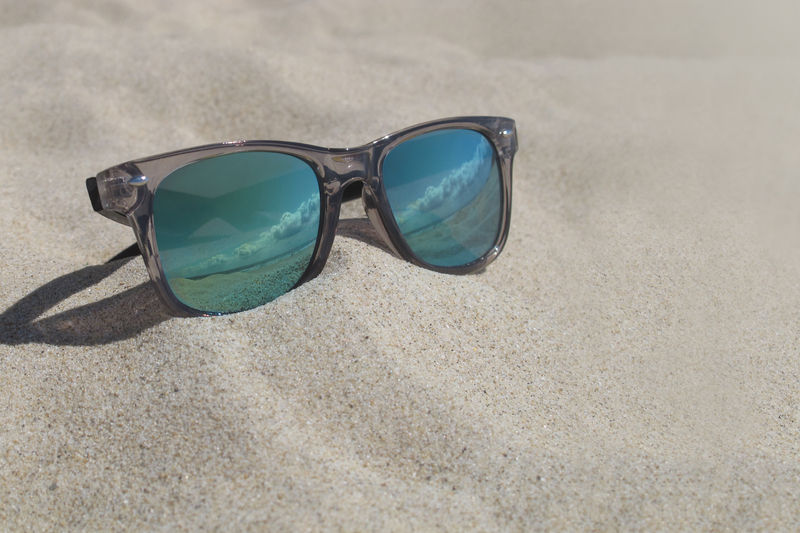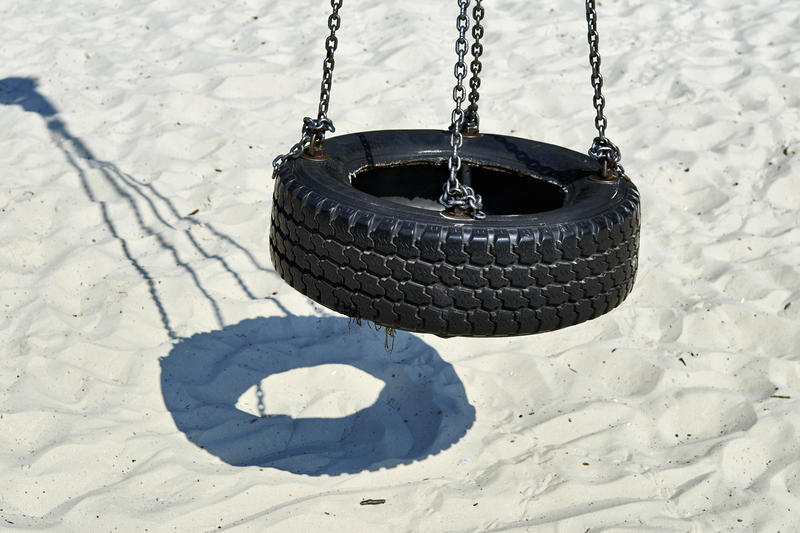Exploring Solutions to Halt Microplastic Pollution: A Comprehensive Guide
Microplastic pollution has emerged as one of the gravest environmental challenges of our time, threatening marine ecosystems, wildlife, and even human health. As awareness grows, stakeholders worldwide are seeking actionable strategies to halt microplastic pollution and restore ecological balance. In this article, we'll delve deeply into the roots of this crisis, its far-reaching impacts, and--most importantly--the cutting-edge solutions being developed to combat microplastic contamination.

Understanding Microplastic Pollution
Microplastics are tiny plastic particles, typically less than 5mm in size, that originate from a variety of sources such as cosmetics, clothing, and the breakdown of larger plastic debris. Their minuscule size makes them pervasive and difficult to remove, allowing them to infiltrate water bodies, soil, and even the atmosphere.
- Primary microplastics: Intentionally manufactured particles, such as microbeads in personal care products and industrial abrasives.
- Secondary microplastics: Result from the degradation of larger plastic waste due to environmental factors, including UV radiation, wave action, or abrasion.
Why Are Microplastics a Major Concern?
- Persistence in the environment: Microplastics do not biodegrade easily, with some persisting for hundreds of years.
- Bioaccumulation: Marine animals mistake microplastics for food, causing toxins to accumulate in their bodies and travel up the food chain.
- Threat to human health: Studies have found microplastics in drinking water, food, and even the air, raising serious health concerns.
Sources of Microplastic Pollution
Halt microplastic pollution efforts start with pinpointing primary sources. Microplastics are released not only from explicit products but also through common everyday activities.
- Plastic Packaging: Single-use plastics like bags, bottles, and wrappers gradually break down into microplastics in landfills and oceans.
- Synthetic Textiles: Clothes made from polyester, nylon, and acrylic shed microfibers during washing, entering wastewater systems.
- Personal Care Products: Many scrubs, exfoliants, and toothpaste once contained microbeads--although bans are increasingly enacted worldwide.
- Car Tires: Tire abrasion on roads creates microplastic dust, which is washed into watercourses by rainfall.
- Urban Runoff: Litter, construction debris, and improperly managed waste often end up as microplastic pollution in nature.
Environmental and Health Impacts: Why Stopping Microplastic Pollution is Critical
The urgency to stop microplastic pollution stems from its ability to disrupt intricate ecological networks and public health.
Environmental Toll
Microplastics contaminate every level of the marine food web, from plankton to large fish and mammals. Their small size allows ingestion by organisms that cannot distinguish them from natural food sources.
- Choking and Starvation: Marine life struggles to digest microplastics, leading to blockages and malnutrition.
- Chemical Leaching: Plastics can absorb toxic chemicals like pesticides and heavy metals, introducing these pollutants to organisms.
- Reduced Biodiversity: Sensitive species suffer population declines, upsetting ecosystem balance.
Human Health Risks
- Drinking Water Contamination: Microplastics have been detected in bottled and tap water worldwide.
- Food Chain Infiltration: Seafood and other agricultural products can carry microplastics into human diets.
- Toxicity Concerns: The long-term health impact of ingesting microplastics is still being studied, with concerns about hormonal disruption and cancer risks.
Innovative Solutions to Halt Microplastic Pollution
A multi-pronged approach is essential to arrest microplastic contamination. Proposed strategies span policy actions, technological innovation, industry reforms, and personal responsibility.
1. Policy and Legislation
- Ban on Microbeads: Many countries have implemented bans on microbeads in cosmetics and cleaning agents.
- Single-Use Plastic Regulations: Bans and taxes on bags, straws, and packaging spur industry shifts and consumer behavior change.
- Extended Producer Responsibility (EPR): Making manufacturers accountable for the lifecycle of products encourages the creation of sustainable alternatives.
- International Treaties: Cross-border agreements to restrict plastic production and improve waste management are crucial for global impact.
2. Advances in Wastewater Treatment and Filtration
A significant portion of microplastic particles enters waterways through sewage and runoff. Enhancing filtration technology at municipal and industrial levels is a pivotal step in halting microplastic pollution.
- Membrane bioreactors: Utilize advanced membranes to capture tiny plastic particles before water is released into the environment.
- Microfiber filters for washing machines: Innovative aftermarket products like lint traps and FILTERS help capture fibers from synthetic clothing before they reach the ocean.
- Nano-filtration techniques: Laboratory-scale nanotechnology shows promise in extracting even the smallest plastic particles from water.
- Sand and biochar filters: Natural filtration media like sand and biochar can adsorb microplastics in smaller-scale wastewater solutions.
3. Biodegradable Alternatives
- Bioplastics: Made from renewable resources, they degrade more rapidly under the right conditions, reducing the persistence of microplastics.
- Plant-based fibers: Shifting from synthetic textiles to cotton, hemp, bamboo, and other natural fibers slashes microfiber shedding.
- Eco-friendly packaging: Compostable and recyclable packaging options are rapidly emerging in mainstream markets.
4. Technological Solutions and Ocean Cleanup
- Innovative booms and barriers: These floating devices trap plastic debris in rivers and estuaries before it can reach the open ocean.
- Artificial intelligence and robotics: Advanced detection methods and autonomous robots identify and collect plastic from waterways more efficiently.
- Plastic-eating enzymes: Scientists are engineering enzymes that can break down plastic polymers into harmless compounds.
5. Consumer Awareness and Behavioral Change
Individual actions matter in the fight to stop microplastic pollution. Raising awareness leads to responsible choices and collective action.
- Reduce plastic consumption: Choosing reusable bags, bottles, and containers limits plastic waste generation.
- Opt for clothing made from natural fibers: Less shedding during washing means less microplastic pollution.
- Proper waste disposal: Avoid littering and participate in recycling programs to keep plastics out of the environment.
- Support eco-friendly brands: Champion companies that invest in sustainable materials and packaging.
6. Research, Monitoring, and Data Collection
- Environmental monitoring: Scientific research teams track the movement of microplastics, measure concentrations, and assess ecological impact, which informs cleanup and prevention efforts.
- Citizen science projects: Community-based data collection--beach cleanups, water sampling--raises awareness and provides invaluable information to scientists and policymakers.
Best Practices for Halting Microplastic Pollution
To curb microplastic contamination on both local and global scales, stakeholders must cooperate across industries and borders. Here are some best practices to consider:
- Promote closed-loop recycling: Encourage the recycling of plastics to prevent leakage into the environment.
- Redesign products for longevity: Favor durable, reusable products over disposable ones to minimize waste creation.
- Invest in green innovation: Support R&D in sustainable alternatives and advanced cleanup technologies.
- Educate and empower communities: Workshops, school curriculums, and public campaigns amplify responsible behavior and demand for change.
- Support legislative reform: Advocate for stricter regulations targeting microplastic sources at national and international levels.
Case Studies: Success Stories in Combating Microplastic Pollution
Microbead Bans in Cosmetics
Several countries, including the United States, Canada, and the United Kingdom, have successfully banned microbeads in personal care products, significantly reducing one source of primary microplastics.
Innovative Water Filtration in Washing Machines
Countries like France now require all new washing machines to include microfiber filters by 2025, aiming to capture billions of microfibers annually.
The Ocean Cleanup Initiative
This nonprofit has deployed systems to remove floating plastic from oceans and is now focusing on river interceptors to capture plastic before it enters marine environments.

The Road Ahead: Challenges and Opportunities
While significant strides have been made to halt microplastic pollution, complex challenges remain. The persistence and ubiquity of microplastics require ongoing innovation, stronger enforcement, and widespread cultural shifts. Opportunities abound for collaborative solutions--from startups developing green materials to global organizations advocating for policy change.
- Scaling up existing solutions: Investment is needed to bring promising laboratory technologies to market.
- Global cooperation: International agreements must be strengthened for comprehensive, coordinated action.
- Continuous research: Emerging threats, such as nanoplastics, call for vigilance and adaptability in response strategies.
Progress demands engagement from all sectors of society--government, industry, scientists, and individuals. By fostering innovation, promoting education, and demanding accountability, we can work collectively to halt microplastic pollution and safeguard the planet for future generations.
Conclusion: A Call to Action
Microplastics may be tiny, but their impact is enormous. Now is the time for robust, coordinated action that zeroes in on root causes and implements effective solutions for stopping microplastic pollution at every turn. Whether through policy reform, innovative technology, sustainable product design, or behavioral change, each effort brings us closer to a cleaner, healthier earth.
The fight to halt microplastic pollution is one we cannot afford to lose. Every initiative, large or small, adds up to a global movement for change. Join the effort--be informed, make mindful choices, and help spread awareness for a microplastic-free future.